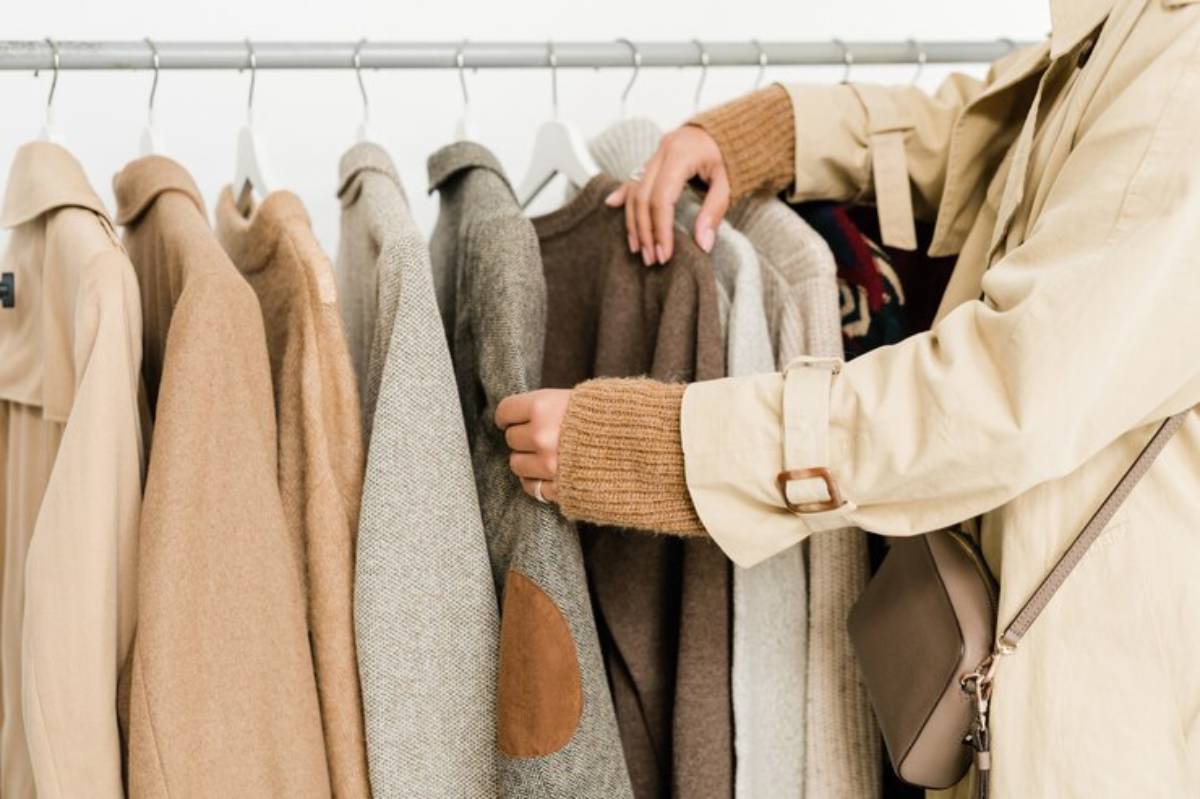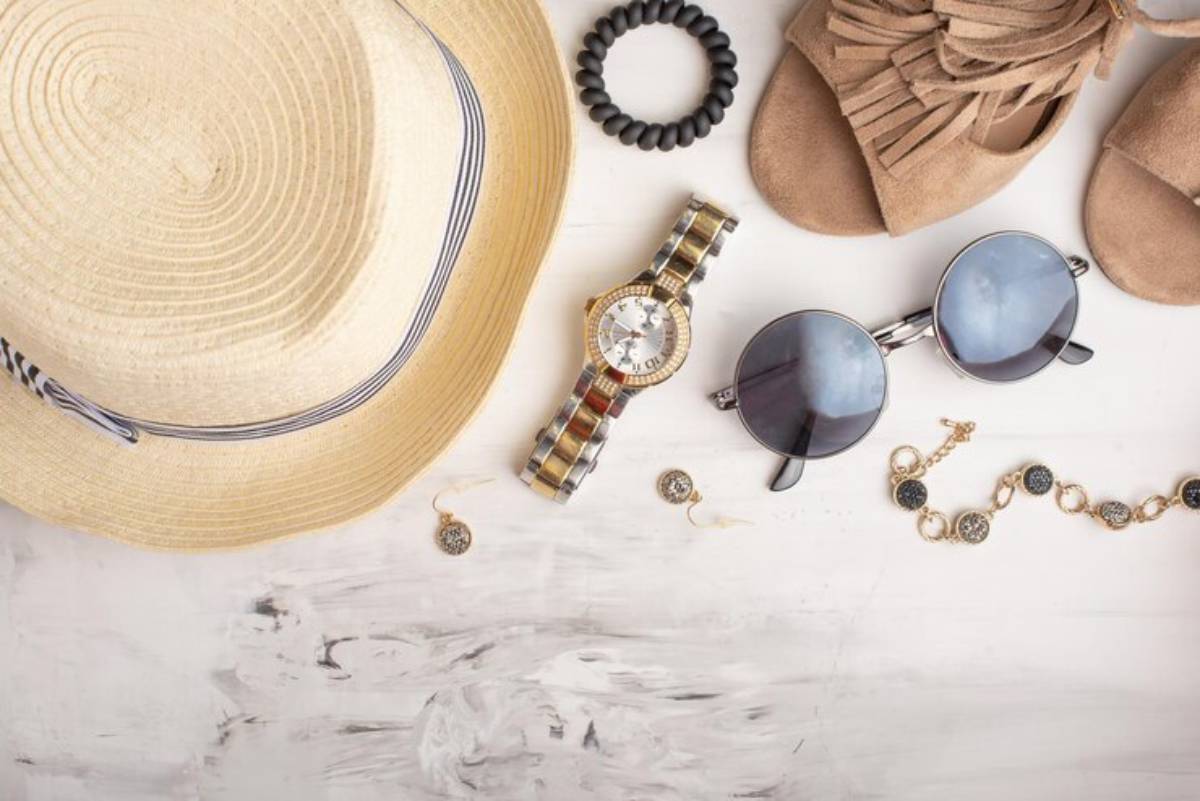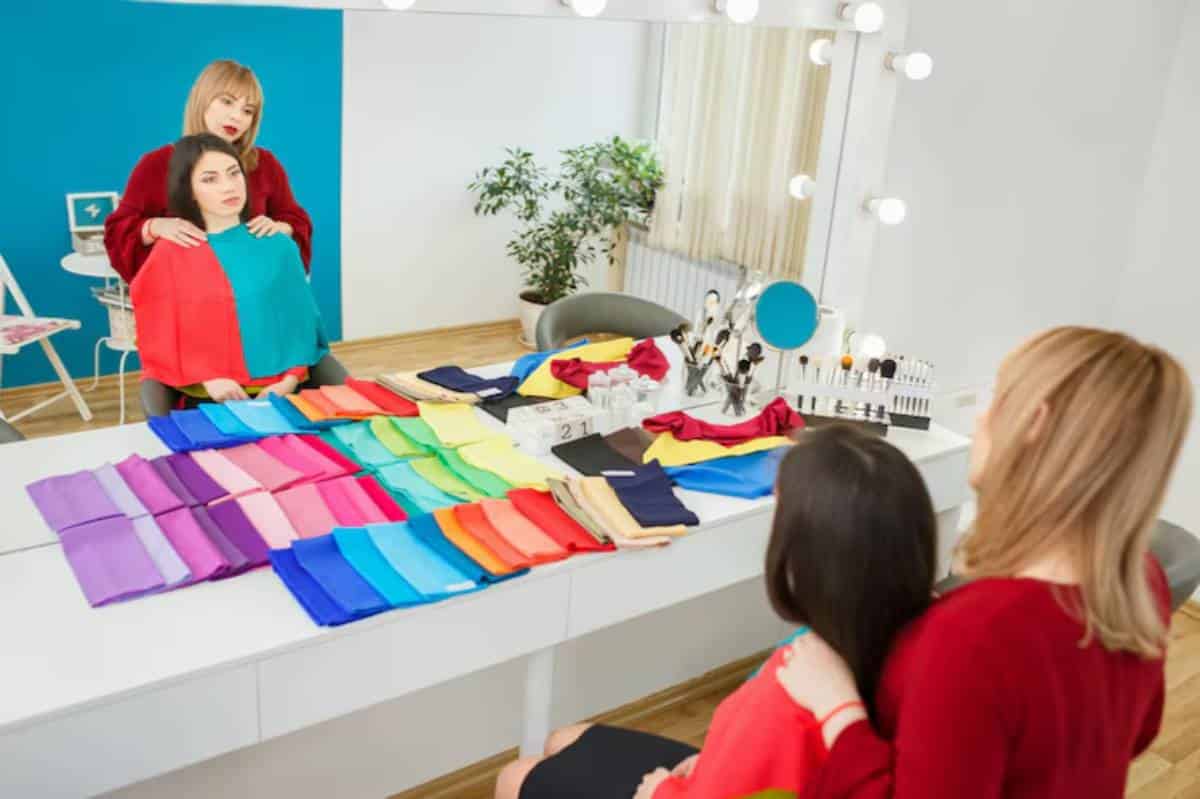
How to Choose Colours That Flatter You Each Season: A Personal Colour Guide for Year-Round Style
Why the Right Colours Make All the Difference
Have you ever worn a colour that made you look tired or washed out, only to receive compliments when you switched to another? That’s no coincidence. The shades you wear can make or break your look. Choosing colours that flatter you enhances your skin tone, brightens your eyes, and boosts your confidence.
This guide will show you how to master seasonal colour matching and create flattering colour palettes tailored to your skin tone, hair, and eye colour, for every season. Whether you’re overhauling your wardrobe or refining your style, this expert-driven personal colour guide is your go-to resource.
Understanding the Core: What Is Seasonal Colour Analysis?
Seasonal colour analysis categorises people into four seasonal palettes—Spring, Summer, Autumn, and Winter—based on undertones, contrast levels, and pigmentation. This system helps you identify the colours that harmonise with your natural features.
Why It Matters
- Enhances natural beauty without heavy makeup
- Reduces wardrobe confusion by offering a clear colour direction
- Makes shopping easier and more cost-effective
According to colour theory and image consultants, wearing colours aligned with your seasonal palette improves how your complexion reflects light, making you appear more radiant and polished.
Quick-Reference Summary: How to Find Your Flattering Colours
- Determine your skin undertone: warm, cool, or neutral.
- Identify your contrast level between hair, eyes, and skin.
- Match to a seasonal palette: Spring, Summer, Autumn, or Winter.
- Select core colours from your palette for everyday wear.
- Use bold shades for statement pieces and accents.
- Reassess each season to refresh your look.
Step-by-Step Guide: How to Practise Seasonal Colour Matching
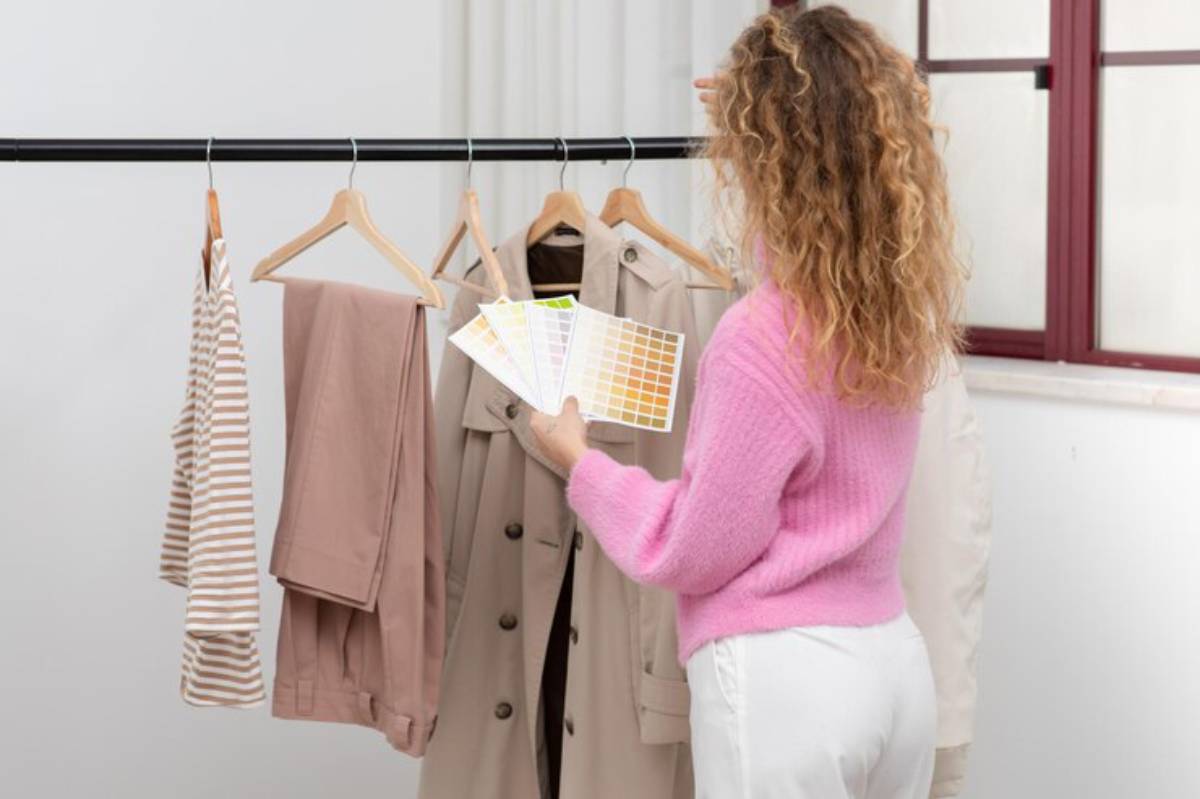
1. Determine Your Skin Undertone
There are three undertones:
- Cool: Pink, red, or bluish hues
- Warm: Golden, peachy, or yellow hues
- Neutral: A mix of both, harder to define
Pro tip: Look at your veins—if they appear greenish, you’re likely warm-toned; bluish suggests a cool tone.
2. Assess Your Natural Contrast
High contrast (e.g. fair skin + dark hair) suits bold palettes like Winter. Low contrast (e.g. medium skin + light hair) suits softer palettes like Autumn or Summer.
3. Identify Your Seasonal Palette
Here’s a breakdown:
Spring (Warm & Light)
- Skin: Ivory, peach, light golden
- Hair: Strawberry blonde, light brown
- Eyes: Light blue, green, warm hazel
- Best Colours: Coral, salmon, camel, mint green, ivory
Summer (Cool & Soft)
- Skin: Cool beige, rose undertone
- Hair: Ash blonde, soft brown
- Eyes: Grey-blue, soft green
- Best Colours: Powder blue, lavender, soft rose, taupe, slate grey
Autumn (Warm & Rich)
- Skin: Golden beige, bronze
- Hair: Auburn, chestnut, golden brown
- Eyes: Hazel, warm brown, green
- Best Colours: Mustard, rust, olive, burnt orange, cream
Winter (Cool & Deep)
- Skin: Porcelain, olive, cool brown
- Hair: Jet black, dark brown
- Eyes: Icy blue, deep brown, cool grey
- Best Colours: Crimson, black, white, emerald, navy
Expert note: Always test colours in natural daylight—artificial light can skew results.
4. Build a Core Colour Wardrobe
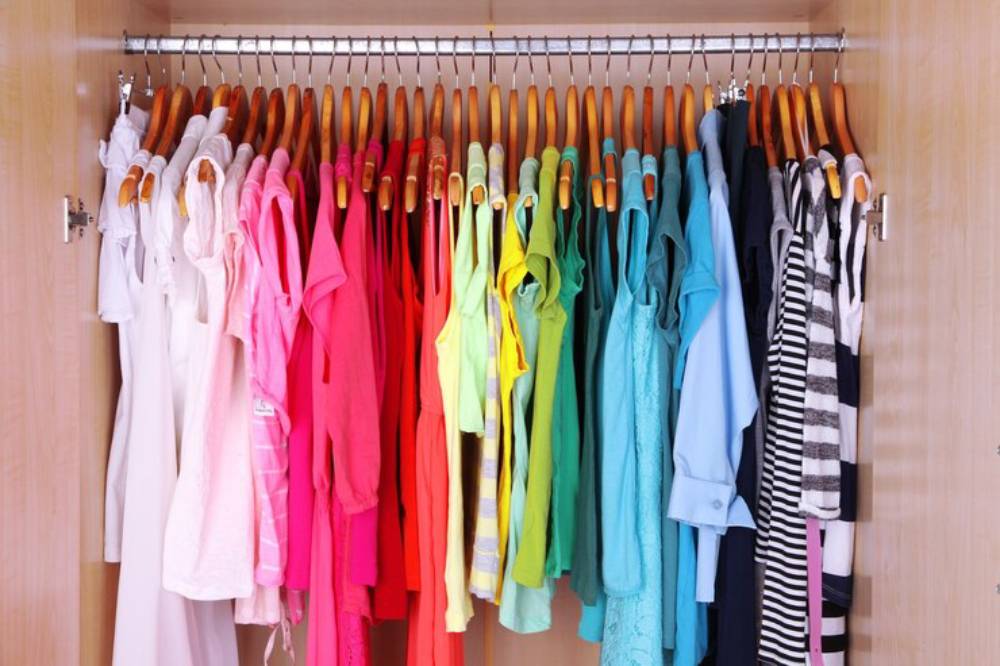
Once you know your palette:
- Choose 3–4 neutral base colours for trousers, blazers, coats
- Add 4–6 accent colours for tops, scarves, and accessories
- Keep 1–2 statement shades for bold pieces or occasion wear
Important: When testing colours, always compare how your skin looks with and without the colour near your face—this side-by-side method reveals subtle differences in glow or dullness.
What to Do and What to Avoid
Do:
- Use swatches or apps like Colourwise.me to test palettes.
- Stick to your colour family when shopping for basics.
- Update accessories (bags, scarves) to reflect seasonal colours affordably.
Avoid:
- Wearing unflattering colours close to your face—they reflect poorly on your skin tone.
- Confusing trend colours with personal colours—what’s in vogue might not suit you.
Stylist insight: “If a colour makes your eyes pop and your skin glow, it’s your colour. If it drains you, ditch it.”
Best Practices & Additional Insights
Adapt with the Seasons
Your skin tone may shift slightly with sun exposure or weather.
So:
- Winter complexions may tan in summer—revisit lighter or warmer tones.
- Rotate shades within your palette to suit seasonal mood (e.g. deeper shades in winter, lighter ones in spring).
Makeup Matching

Align makeup shades with your clothing palette:
- Lipsticks, blush, and eye shadows should complement your undertone.
- Opt for natural or bold looks that reflect your seasonal vibe.
Read our guide on how to build a seasonal capsule wardrobe on a budget to align colour choices with practical wardrobe planning.
Secret Tip: Take selfies in natural light wearing different colours—reviewing the photos objectively can help you spot which shades truly enhance your features.
FAQs: Seasonal Colour Matching and Personal Palettes
Can I be a mix of two seasons?
Yes. Some people are “flows” between seasons (e.g. Summer-Autumn). In such cases, combine elements from both palettes.
Is seasonal colour analysis only for women?
Not at all. Men benefit too, especially for formalwear, suits, and shirt colours.
What if I love colours outside my palette?
You can still wear them—just keep them away from your face or balance them with flattering tones through makeup or accessories.
How often should I reassess my palette?
Every 1–2 years, or after major changes like hair colour, skin tone shifts, or lifestyle updates.
Can I wear black if it’s not in my seasonal palette?
Yes—but keep it away from your face or soften it with a scarf or cardigan in a flattering shade.
What’s the easiest way to figure out my season without a professional?
Use natural lighting and compare how different coloured tops affect your skin tone, eyes, and overall glow.
Do hair dyes affect my seasonal palette?
Absolutely. Dramatically changing your hair colour can shift your contrast level and even your undertone category.
Can neutrals be warm or cool, too?
Yes—white can be warm (cream) or cool (icy), and beige can lean golden or pinkish. Choose neutrals that match your undertone.
What if I like to wear all black or all white year-round?
You can still make it work—just use flattering makeup and accessories in your palette to balance out your look.
Is there a universal colour that flatters everyone?
Teal, soft blush, and true red often complement most skin tones across all seasons.
Do I need a different palette for each season of the year?
Not necessarily—stick with your base seasonal palette and rotate lighter or deeper shades depending on the season.
Can accessories help balance unflattering colours?
Yes—wearing earrings, scarves, or lipstick in your best shades can offset a less-than-ideal top or dress colour.
How do I know if a colour is draining me?
If your skin looks dull, your eyes lose their sparkle, or dark circles appear more pronounced, the colour likely doesn’t suit you.
Should I use my seasonal palette when choosing glasses or frames?
Yes—frames that match your undertone and contrast level will enhance your natural features more harmoniously.
Conclusion: Find Your Colours, Find Your Confidence
Choosing the colours that flatter you each season is a game-changer. With the right personal colour guide, you’ll save time, elevate your look, and feel more aligned with your natural beauty. Embrace the power of seasonal colour matching and build a wardrobe that reflects the best version of you.
Ready to find your perfect colour palette? Use our free digital swatch tool or explore the flattering colour palettes guide to start styling with confidence!
